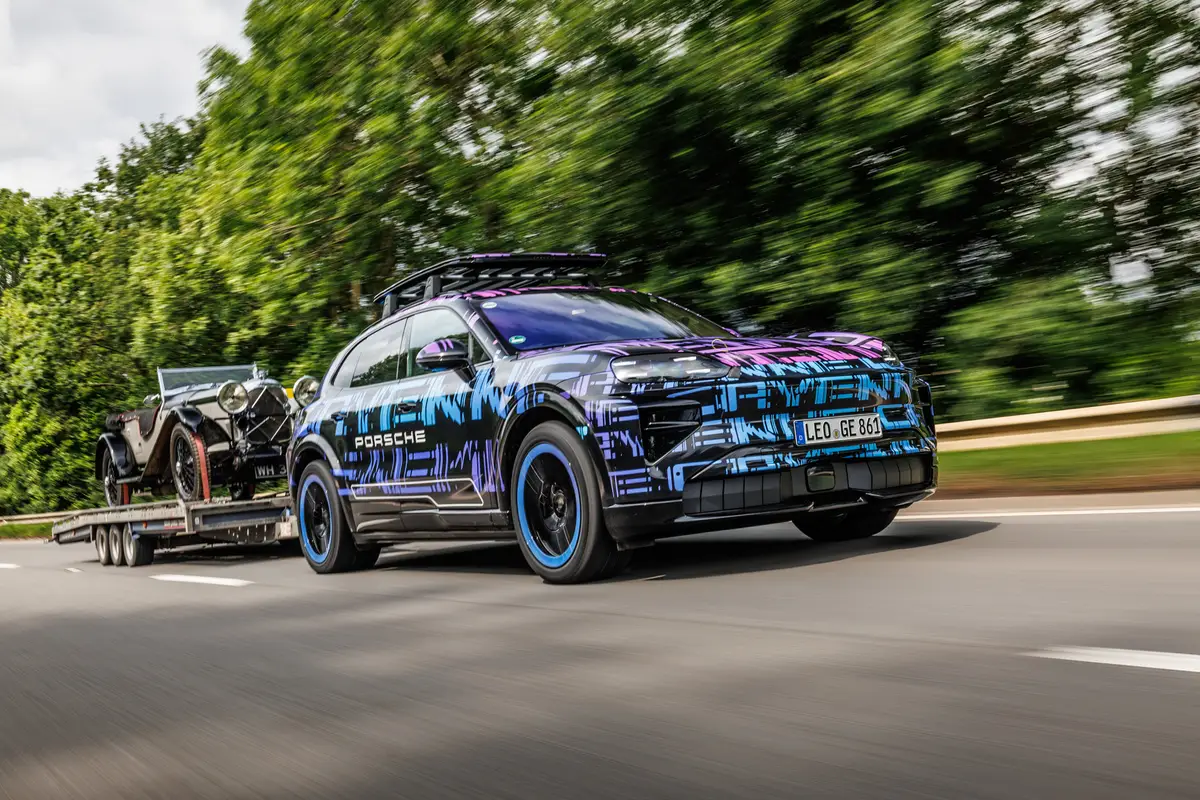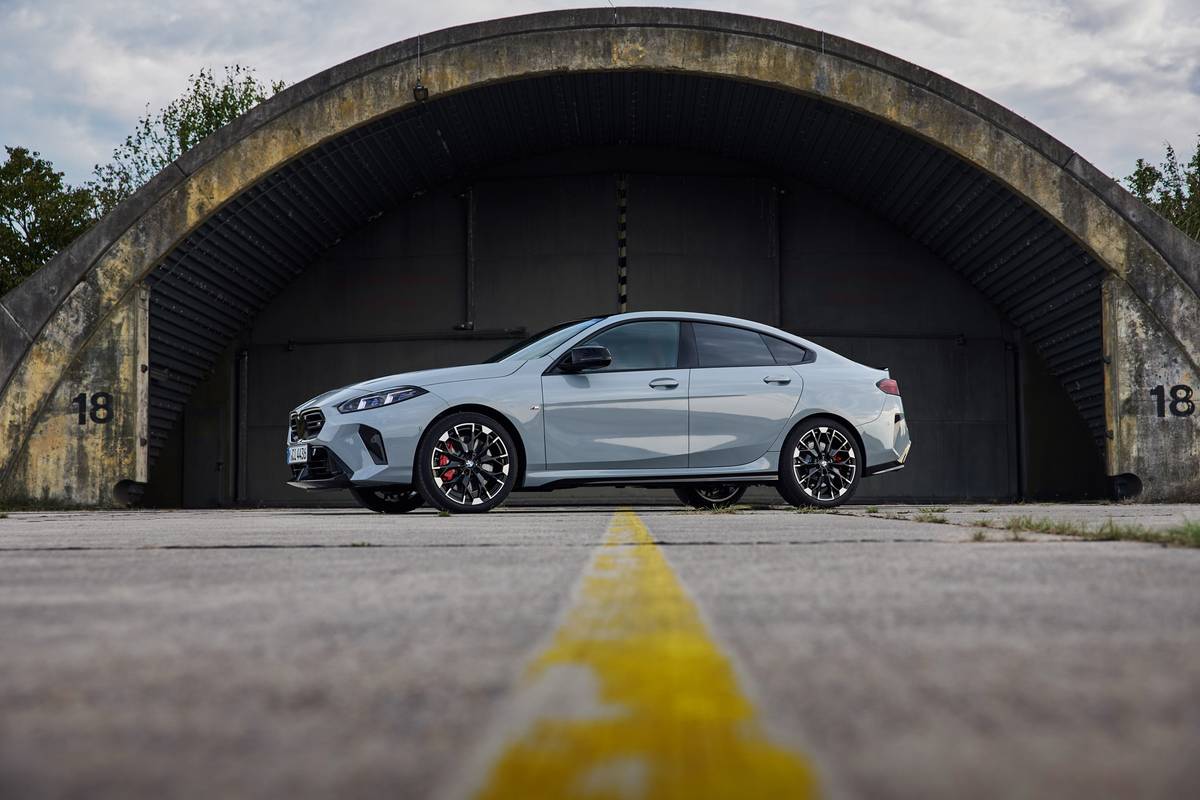Star-Telegram.com's view
Saab, the Swedish automaker that until five years ago had no wagons in its lineup for a quarter of a century, has a brand-new one for 2006.
Based on the design of the popular 9-3 sedan that debuted three years ago, this new compact model complements the midsize 9-5 wagon that arrived five years ago and gives consumers yet another alternative to the sport utility vehicle.
I’m the one calling this car a wagon, though. Saab calls it a “sport combi,” and none of the company’s literature makes any reference to it as a wagon. “Combi” is a European automotive term for a wagonlike vehicle, though. Volkswagen once called its quaint minibus model a “combi.”
A wagon is what it is, however.
And while small squareback and hatchback cars have been popular for years in Europe, they’ve had their ups and downs in the U.S. market.
Wagons are a vehicle style once declared all-but-dead by the U.S. auto industry But they have experienced a revival lately, and most automakers have one or more in their lineups.
More are on the way, as consumers begin to turn away from the gas-guzzling, trucklike SUVs that have been so popular over the past decade and a half. The new wagons, some of which are being called “crossover” utility vehicles, offer carlike rides and handling, as well as decent fuel economy.
There’s still a great reluctance on the part of the automakers to call these vehicles wagons, but that’s exactly what they are, and there’s nothing wrong with that. Chrysler, for instance, calls its Pacifica six-passenger wagon a “sport tourer.” Others call theirs by such names as “liftback,” “five-door,” or “sport activity vehicle.”
Saab’s SportCombi is a very carlike five-door version of the 9-3 sport sedan. And no matter what they call it, it’s a very practical alternative to the big SUVs, especially as gasoline prices continue to climb. If marketing the SportCombi successfully to U.S. consumers requires calling it something other than a wagon, then so be it.
The concept isn’t limited to wagons. Recently, GM stopped calling its minivans by that name, instead referring to them as “sport vans.” The minivan is falling into disfavor in the same way that the station wagon did about the time the minivan craze began in the mid-80s.
Europeans favor today’s compact wagons and hatchbacks over pickup trucks and big SUVs for two reasons: They’re smaller and easier to negotiate through narrow European city streets (many of which were built long before the automobile was invented), and they offer protection to cargo that you don’t have with the open bed of a pickup. It rains and snows a lot in Europe, you know.
Americans have been spoiled by our big SUVs and pickups that put us up over the rest of the traffic, but high gasoline prices are taking away some of the big vehicles’ charm and practicality. Wagons are catching on again, but we probably won’t ever see them as popular here as they are in Europe.
Still, this newest Saab model is a gem among the current crop of wagons. It’s as much fun to drive as the 9-3 sport sedan, yet versatile enough to carry bulky and odd-sized cargo such as snow skis and other sports equipment. I used my SportCombi test vehicle to haul home some purchases from The Home Depot for the house I’m remodeling and was able to fit a whole lot inside.
This is a car that was designed for U.S. roads and drivers and gives consumers an upscale yet affordable alternative to cookie-cutter family cars such as the Honda Accord and Toyota Camry. It also offers an alternative to some of the crossovers made from cars such as the Accord and Camry – the Honda Pilot and Toyota Highlander, for example.
With a base price of $26,900 (plus $720 freight), the SportCombi is priced about the same as a Highlander. Yet it is a premium automobile in the vein of an entry level Lexus or Acura. The starting price is about $3,000 less than that of the Audi A4 Avant, one of the SportCombi’s nearest two competitors; the other is the Volvo V50 wagon.
Fuel economy is one of the SportCombi’s strongest points, at least for the base model. EPA estimates are 22 miles per gallon in the city and 31 mpg on the highway with the SportCombi’s turbocharged, 2.0-liter, inline four-cylinder engine. It turns out 210 horsepower and 221 foot-pounds of torque.
A four-cylinder Highlander has just 160 horsepower, and EPA estimates of 22 city/27 highway. Most Americans would consider it to be underpowered, but moving up to the 230-horsepower V-6 Highlander brings poorer fuel economy ratings – 18 city/24 highway.
With its lower weight, the SportCombi has as much zip with its four-cylinder as the Highlander does with its V-6.
We tested the uplevel Aero model ($32,900 plus freight), though, which is designed for people who want more power and don’t mind paying for it. It comes with a turbocharged 2.8-liter V-6 engine rated at 250 horsepower and 258 foot-pounds of torque, enough power to push this vehicle along like a sports car.
Standard with the Aero is a six-speed manual, which makes this car a lot of fun. Optional is a six-speed automatic ($1,350) with a manual-shift option (clutchless) controlled by either the floor-mounted shifter or paddles on the steering wheel. Our test car came with the automatic, which shifted just fine on its own without any help from me.
.One trade-off with the Aero’s extra power is lower fuel-economy ratings, but they’re still fairly respectable at 17 mpg in the city and 28 on the highway, still well above most SUVs with this much power.
The SportCombi seats five people quite comfortably, has a cushy ride and offers decent cargo capacity. But it still handles more like a sports coupe than any SUV or traditional wagon. Behind the wheel, this vehicle is so much fun that you can forget you’re driving a practical vehicle that can haul the kids and their soccer gear all over town.
Standard in the base model is a five-speed manual transmission, which driving enthusiasts will prefer in this car. For those who have to deal with rush-hour stop-and-go traffic, Saab has provided an optional five-speed automatic ($1,350) to go with the 2.0-liter engine. The five-speed automatic also has the manual-shift function.
A long list of amenities is included in the base price of the SportCombi, such as leather seats, power rack-and-pinion steering, antilock brakes, traction control, electronic stability control, automatic climate control, power windows/mirrors/door locks (with remote), leather-wrapped steering wheel with audio controls, wood-effect interior trim and cruise control.
Also on all models are projector-beam halogen headlights, rear defogger, alarm system, cabin air filter, multi-function driver-information center, heated outside mirrors, tilt and telescopic steering column, 150-watt AM/FM/compact-disc stereo, center armrest with 12-volt power outlet, daytime running lights and rear fog lights.
The rear seat is a 60/40 split-folding bench, which allows for loading more cargo when you don’t need the rear seat for passengers.
Among available options are a power moon roof ($1,200) and heated front seats and headlight washer nozzles ($550). A premium package ($1,895) on the base model includes such extras as front fog lights, Xenon headlights, 300-watt audio system with six-disc CD changer, red walnut interior trim and more.
Upgrading to the Aero brings the bigger engine, as well as 17-inch alloy wheels and dual power sport front seats.
Besides the six-speed automatic, extras included on our test model were fusion blue metallic paint ($550), heated front seats and headlight washers ($550) and a GPS navigation system ($1,995).
Total sticker was $38,065, including freight.
G. Chambers Williams III is staff automotive columnist for the San Antonio Express-News and former transportation writer for the Star-Telegram. His automotive columns have appeared regularly in the Star-Telegram since 1995. Contact him at (210) 250-3236; chambers@star-telegram.com.
At a Glance: 2006 Saab 9-3 SportCombi
The package: Compact, five-door, five-passenger, turbocharged four-cylinder or V-6, front-drive premium wagon.
Highlights: Sweden’s Saab offers the first wagon version of the popular new 9-3 sport sedan. It’s based on a new vehicle platform that debuted for 2003 on the sedan model and is the second wagon in the Saab lineup. It’s slightly smaller than the 9-5 wagon, but still roomy enough for four adults or two adults and three kids.
Negatives: Can get pricey with the uplevel trim and options.
Engine: 2.0-liter I-4, turbocharged; 2.8 liter V-6, turbocharged.
Transmission: 5 or 6-speed manual, 5- or 6-speed automatic.
Power/torque: 210HP/221 foot-pounds; 250HP/258 foot-pounds.
Length: 182.5 inches.
Curb weight: 3,175-3,285 pounds.
Cargo volume: 14.8 cubic feet (behind rear seat).
Brakes, front/rear: Disc/disc, antilock.
Fuel capacity/type: 16.4 gallons/unleaded regular.
EPA fuel economy: 22 miles per gallon city/31 mpg highway (210-hp model w/automatic); 17 city/28 highway (V-6, automatic).
Major competitors: Audi A4 Avant, Volvo V50, Jaguar X-type wagon.
Base price range: $26,900-$32,900 plus $720 freight.
Price as tested: $38,065, including freight (Aero model with V-6 engine, six-speed automatic and other options).
On the Road rating: Four stars (out of five).
Prices shown are manufacturer’s suggested retail; actual selling price may vary according to manufacturer and/or dealer rebates, discounts and incentives, if any.
Latest news



